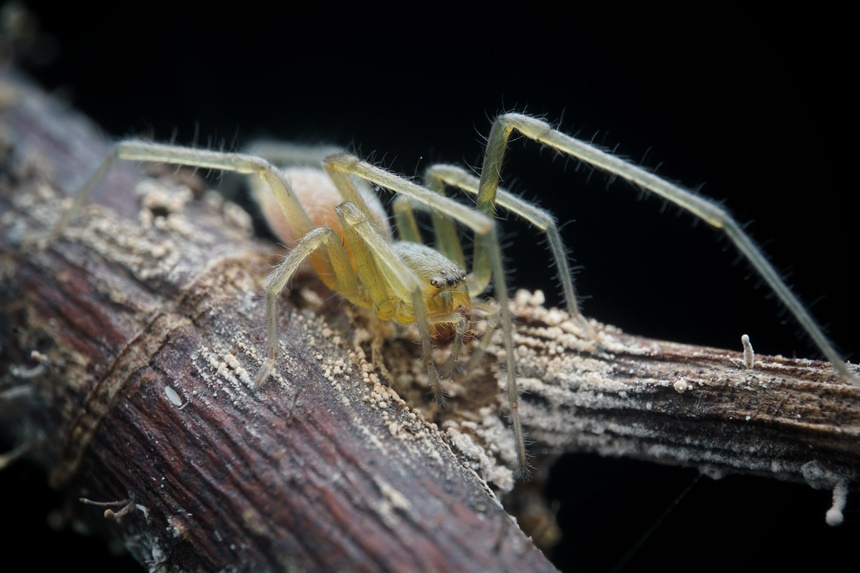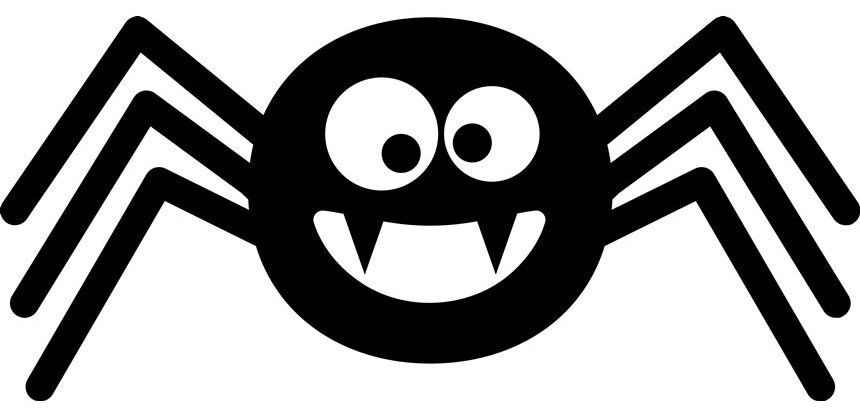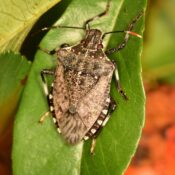Spiders can sometimes be dangerous in weird ways. At a Michigan gas station in 2015, a man tried to kill one with a lighter and accidently torched a pump island instead, and in 2014, a guy in Seattle burned his house down trying to kill spiders with a blowtorch. But fire isn’t typically why we fear spiders.
Some experts think our aversion to spiders may be an evolutionary response, woven into the very strands of our DNA. Even though less than one percent of the world’s 50,000 species of spiders pose a risk to us, early humans who kept their distance from things like spiders, scorpions, and snakes probably lived longer.
These days, fake spiders star in horror films and come out of the woodwork at Halloween time because a lot of folks – perhaps 75 percent of the population – still find them creepy, and from 2.7 to 6.1 percent of Americans suffer from arachnophobia, an intense fear of spiders. Even so, it would be helpful to learn how to identify and avoid a few of our most common venomous spiders.
I want to point out that spiders are essential to the web of life, eating millions of tons of insects each year. Not only do they munch mosquitoes and feast on flies, they are key predators of agricultural pests.
Roughly 3,500 kinds of spiders call the U.S. home, and of them, only a dozen have a powerful enough venom to make us ill (all other spiders have less-toxic venom for immobilizing their prey). Most states have just two or three toxic spiders, with fifteen states reporting a single one. There’s a greater diversity of spiders in the South, generally speaking.
The northern black widow is the most widespread species of concern. As its name suggests, it’s cold-hardy, but oddly enough is found across the South as well as the North. It’s less common in the Midwest and Northwest. A red-and-black color scheme on a car is sporty. On a spider, it’s scary. Lucky for us, to , to identify the northern black widow we don’t have to flip her over to look for the characteristic red hourglass shape on her belly. Females, which can be 1.5 inches long (legs included), have red geometric patches on their top side, and a broken-hourglass mark on their bellies.

An interesting sidebar about the black widow, so called because they’re known to eat the male after mating, is that such behavior is not the norm. This “sexual cannibalism” was first seen in the lab where males couldn’t get away. It seems that in the wild, males have a “best defense is a running head start” policy, and most survive.
Fortunately, black widows live outside. They’re sometimes brought in on firewood or other items where these shy, nocturnal bug-hunters hide during the day. Northern black widows can also wander in through gaps in foundations or broken weather-seals around doors if there are cool, damp places next to the house to hide in. Move brush and leaves away from foundations, and keep door gaskets in good shape.
Their bites initially cause redness and swelling, followed by severe muscle and stomach cramps, nausea, and sweating within an hour. If you’ve been bitten by a black widow, call a poison control center or dial 911 immediately. Apply ice to the bite while you wait for help. Do not use a tourniquet.
Although black widows have the most toxic venom, the brown recluse spider is more deadly. Bites from the brown recluse, while rare, may require medical intervention because they can cause extensive tissue death (necrosis) with possible infection and scarring. In about one percent of cases, their bites are fatal when the venom becomes systemic.

Brown recluse spiders are shiny, hairless, tan to brown, and up to a half-inch long. An important feature to look for is a dark brown, violin-shaped mark on its back, with the neck of the violin pointing backwards. True to their name, these guys are reclusive, which is a problem when they hide in clothing or bath towels. Their range extends from the Gulf States as far north as Virginia, with higher numbers in the Midwest. But they sometimes hide in luggage or gear of returning vacationers, and show up elsewhere.
Most brown recluse bites result in tissue death around the bite, forming a wound that can take weeks to heal. The main concern is infection at the site. Bites that lead to fever, nausea, or dizziness may suggest a systemic response, and you should seek medical care right away.
Primarily an outdoor species, brown recluse spiders will adapt to living inside, especially as cooler weather approaches. Many home insecticides are not effective (spiders aren’t insects), and all come with health risks. Infestations are best handled by a professional.
There is a house-dwelling native spider that can bite, the yellow-sac spider. Found in all 50 states, they are ghostly pale, yellow to greenish (sometimes pink or tan), and from three-sixteenths to three-eighths of an inch long. They cache their silken sac-homes behind pictures, in the corners of rooms, and other nooks. Though not dangerous, this species has a mildly toxic venom that causes a rash, and sometimes a limited necrotic area.

About thirty years ago, one bit my neck (it was in my shirt collar), and a nickel-size wound developed. The lesion turned gray and took weeks to heal. I have to count my blessings, though. There was no fire.
Become a Saturday Evening Post member and enjoy unlimited access. Subscribe now




Comments
Mr. Hetzler’s essays are just packed with interesting information…and quite a bit of funny bone tickling as well!
Thank you!
Thanks Paul for this quite in-depth look at spiders! I didn’t know know there were over 50,000 species of them, and 3,500 here in the U.S. Dangerous spiders seem to be low risk. Still it’s best we have our pest control guys keeping them under household control once per year or as needed.
In the big picture as you point out, they’re very important ecologically and agriculturally. Very likely the same can probably be said for snakes too, I don’t know, but feel it best to steer clear of them. Really clear.
Wonderful stories by Mr Hetzler. His writing, with the humor added is remarkable.